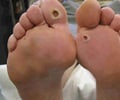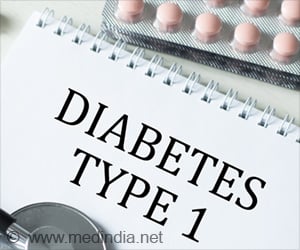New diabetes classification consists of several subgroups for type 2 diabetes and has a total of 5 different groups.

TOP INSIGHT
ANDIS study finds a new way of classifying diabetes into 5 different groups which eases risk assessment and treatment.
Today, about 425 million people around the world have diabetes. By 2045, the number is expected to have increased to 629 million*. Secondary diseases in the form of kidney failure, retinopathy (eye damage), amputations and cardiovascular diseases result in huge costs to society and major individual suffering. Thus, the need for new and better treatment options is great.
"Current diagnostics and classification of diabetes are insufficient and unable to predict future complications or choice of treatment", explains Professor Leif Groop, who initiated the study.
He believes that the results represent a paradigm shift in how to view the disease in the future.
"Today, diagnoses are performed by measuring blood sugar. A more accurate diagnosis can be made by also considering the factors accounted for in ANDIS (All New Diabetics In Skåne)."
In addition to a more refined classification, the researchers also discovered that the different groups are more or less at risk of developing various secondary diseases.
Diabetes is currently divided into: type 1 diabetes (approx. 10 per cent), type 2 diabetes (85-90 per cent) and a number of less common diseases such as LADA, MODY and secondary diabetes.
However, the researchers suggest a new set of subgroups:
• Group 1, SAID (severe autoimmune diabetes): essentially corresponds to type 1 diabetes and LADA (latent autoimmune diabetes in adults), and is characterised by onset at young age, poor metabolic control, impaired insulin production and the presence of GADA antibodies.
• Group 2, SIDD (severe insulin-deficient diabetes): includes individuals with high HbA1C, impaired insulin secretion and moderate insulin resistance. Group 2 had the highest incidence of retinopathy.
• Group 3, SIRD (severe insulin-resistant diabetes): is characterised by obesity and severe insulin resistance. Group 3 had the highest incidence of kidney damage - the secondary disease producing the highest costs to society.
• Group 4, MOD (mild obesity-related diabetes): includes obese patients who fall ill at a relatively young age.
• Group 5, MARD (mild age-related diabetes): is the largest group (about 40%) and consists of the most elderly patients.
"The most insulin resistant patients (Group 3) have the most to gain from the new diagnostics as they are the ones who are currently most incorrectly treated", says Professor Leif Groop.
The researchers subsequently repeated the analysis in a further three studies from Sweden and Finland.
"The outcome exceeded our expectations and highly corresponded with the analysis from ANDIS. The only difference was that Group 5 was larger in Finland than in Skåne. The disease progression was remarkably similar in both groups", says Leif Groop.
The recruitment of newly diagnosed diabetes patients continues and the researchers have several studies underway based on the data they have already acquired.
"The longer the study is running, the more and better data we'll get", says Emma Ahlqvist.
The researchers are also planning to launch similar studies in China and India with people of different ethnic backgrounds.
"This will give us even better opportunities to tailor the treatment to each individual", she concludes.
Source-Eurekalert
 MEDINDIA
MEDINDIA




 Email
Email










